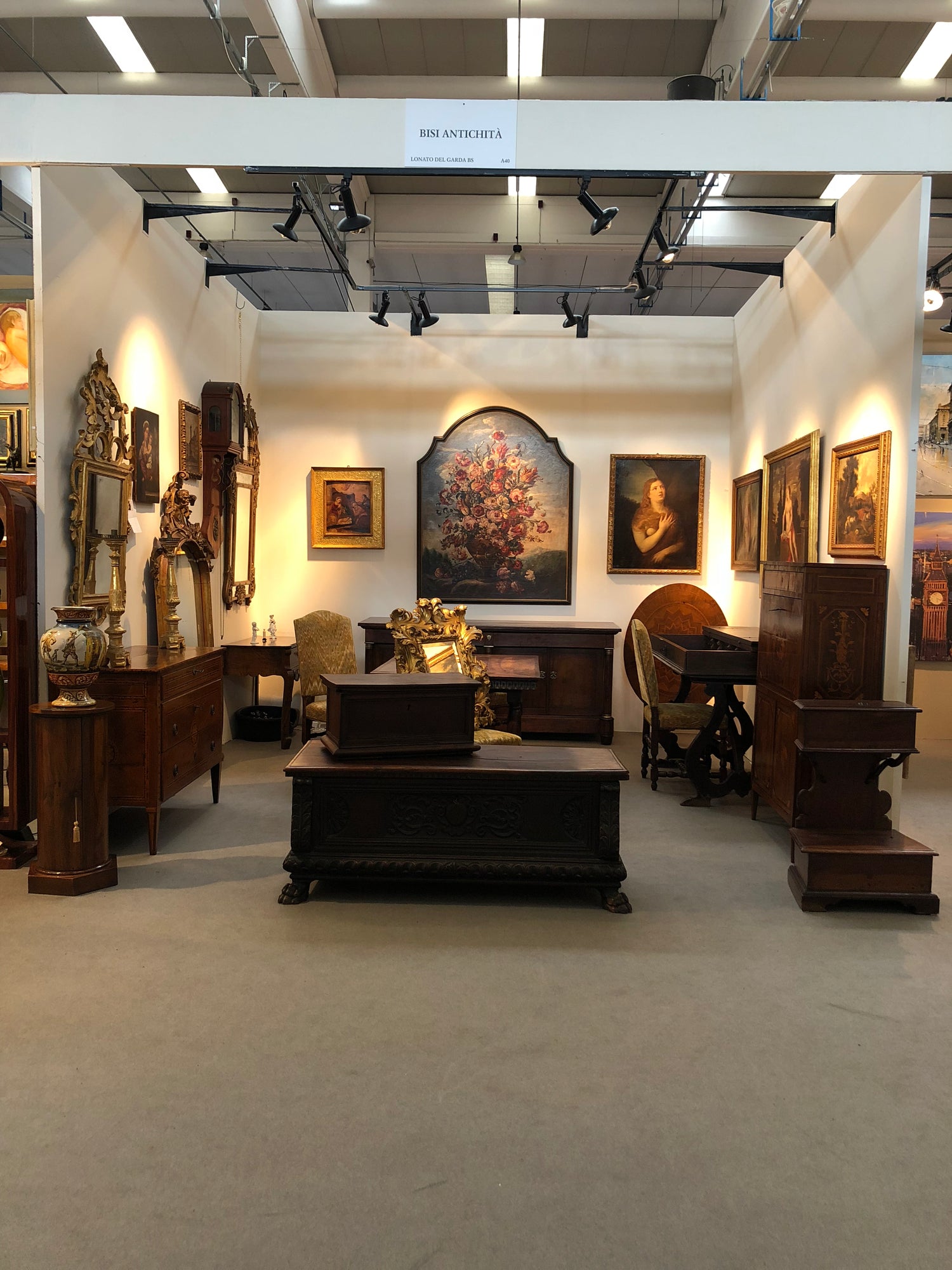Judith with the Head of Holofernes. 17th century
Judith with the Head of Holofernes. 17th century
LATE MANNERIST SCHOOL OF FONTENBLEAU (ENTOURAGE OF TOUISSANT DUBREUIL 1561-1602 ), JUDITH WITH THE HEAD OF HOLOFERNES (oil on canvas)
The oil on canvas we present depicts one of the most famous female iconographic subjects from Old Testament literature: the brave Jewish woman Judith carrying the head of the Assyrian general Holofernes after having beheaded him.
The episode is inspired by the Old Testament writing, which takes its name from the heroine of the same name: Book of Judith 13: 8-11. More precisely, the subject of the painting constitutes the dramatic epilogue of a story of female plots, which, during the siege of the city of Bethulia by the Assyrian army of King Nebuchadnezzar, narrates the exploits of the Jewish widow Judith who first unsheaths the feminine weapon of seduction to make the enemy general Holofernes fall in love with her, cleverly plotting behind his back until she beheads him by taking advantage of his state of drunkenness during a banquet.
Thanks to the deception perpetrated against her enemy in love, Judith becomes a symbol and prototype of female cunning over the invader's arrogance thanks to her bewitching work of seduction.
Although the subject we are talking about achieved undisputed fame and notoriety in the seventeenth century thanks to the genius of Caravaggio, who "consecrated" it with the well-known painting kept in the Galleria Nazionale d'Arte Antica in Palazzo Barberini to the point of establishing itself as a true artistic "mystery" tableau that has hit the headlines in recent weeks due to the quarrel concerning a presumed example of an autographed Caravaggio found in an attic in the French city of Toulouse, it is an incontrovertible fact that our subject represents the most attractive thing the art market can continue to offer for amateurs and collectors, due to an intrinsic sense of pathos that constitutes the very supporting structure of the episode as well as the lifeblood of every pictorial representation of the genre, what makes our painting interesting is its chronological placement, which takes it back to an artistic phase preceding the Caravaggio lesson: Mannerism.
The sober and composite figurative elegance, the luminosity and the colouring, combined with a certain stylization of the face and anatomy, allow us to place the painting in the early seventeenth century and, even better, to consider it a genuine result of late French Mannerism attributable to the entourage of Touissant Dubreuil (Paris 1561-1602), one of the epigones of the well-known school of Fontenbleau, often evoked for the play of reciprocal influences and suggestions with Florentine Mannerism.
Open to the tendencies of Primaticcio and Nicolò dell'Abate, Dubrueil, who was also the court painter of Henry IV, shows his adherence to the metaphysical instances of Mannerism in “Sacrifice and Awakening of a Lady” (castle of Saint Germain en Laye), but above all in “Angelica and Medoro”, in which he definitively made the new style his own.
What Caravaggio will make a “workhorse” on the centrality of pathos destined to express iconically the dangerous oxymoron eros-thanatos in all its seductive crudeness for followers and admirers, from Artemisia Gentileschi (Florence, Uffizi and Naples, Capodimonte Gallery) to the Tuscan Cristofano Allori (Florence, Uffizi), is expressed in our canvas through the language of intellectual sublimation typical of Mannerism, which transcends pathos through the entirely cerebral virtuosity entrusted to colour.
The absence of the old servant next to Judith, who instead constitutes an essential iconographic element even in the previous examples by Botticelli and Mantegna isolates our heroine in all her self-referentiality, almost as if she wanted to remove the event from its historical and contingent dimension, with all the crudeness that overflows in other versions, to make her a “Circe” who, with her fixed gaze in the foreground, captures the spectator, almost as if she wanted to question him with respectful provocation on the boundaries of the art of female seduction, leaving to the imagination the crudest, most macabre and repellent things that are not exhibited in the canvas.
In addition to the acclaimed iconographic success of the subject, the attribution to the singular late-Mannerist school of painting, the not insignificant dimensions of the canvas (133 x 100 with frame) and the state of conservation contribute to increasing its appeal.
EPOCH Thinking about making metafield with features
EPOCH Thinking about making metafield with features
Material
Materials
Materials
dimensions - transport or notes
dimensions - transport or notes
Share











Frequently Asked Questions
Things to know
The items are in their natural state
All our pieces are authentic and retain the signs of time that tell their story. This means that they may present small imperfections, signs of wear or original patina, which for us are an integral part of their charm and uniqueness.
We restore on request
Unless explicitly requested, we leave the signs of time and imperfections intact, to preserve the authenticity and soul of the antique object. However, if you want a restoration intervention, our team of experts is at your disposal to evaluate together the most suitable solution.
We work only and exclusively by appointment
Our service is exclusive and personalized: we receive only by appointment to guarantee you our full attention. Contact us to arrange a meeting and discover our collection in complete tranquility.
How does transportation work?
We offer different transport solutions, depending on the size and delicacy of the item. We rely on specialized professionals to ensure that each piece arrives at its destination in perfect condition. Contact us for more details or to request a personalized quote

QUALITY AND PASSION FOR GENERATIONS
Since the mid-19th century, our family has been working wood with dedication, transforming a small workshop in Poggio Rusco into a reality rooted on Lake Garda. Since 2014 , we have moved away from the family tradition of furniture production, orienting ourselves towards the restoration and search for ancient treasures to offer to our customers, keeping intact the values of authenticity and quality.











